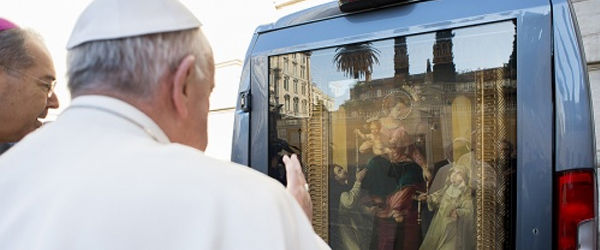Early Sunday morning after the Friday Jesus died, Mary called Magdalene hurried to the last place where she had seen the Corpse of her Lord, Jesus of Nazareth. In their haste to bury the Corpse before the Sabbath, the disciples had not had time to properly prepare the body. As Bishop Fulton Sheen noted in his magisterial “Life of Christ,” “The most astounding fact about this spectacle of vigilance over the dead was that the enemies of Christ expected the Resurrection, but His friends did not. It was the believers who were the skeptics; it was the unbelievers who were credulous.” Mary Magdalene found an empty tomb when she rushed to the place of the burial of Jesus.Why just an empty tomb? Why were there no witnesses to the Resurrection itself? Why didn’t the God of history arrange it so that there would be witnesses of the moment when the cold Corpse quickened again with the fullness of life? No one saw the defeat of death. Rather, each person, including those who saw with their own eyes and felt with their own hands the Risen Christ, first heard the message from another and had a most momentous choice — to believe or not to believe. Before Mary Magdalene embraced her beloved Jesus, she first was told by an angel at the tomb that he was risen. Before Peter saw the One he betrayed three times, he first heard from Mary Magdalene of the Lord’s rising. Before doubting Thomas put his finger into the nail piercings and his hand into Christ’s side, he first heard from the other apostles about the resurrection. In a culture in which a woman could not serve as a witness, the first recorded witnesses of the Resurrection were women. Does not this small detail itself testify to the truth of the account?So it has been and will be forever. We too have a great invitation — to believe. Sooner or later, we too will see with our own eyes, the glorious Body of the Living Christ. But for now, we are just like Mary Magdalene, Peter and Thomas. We all are invited to believe. We can believe or not believe.Some skeptics have questioned the Resurrection. They claim that the apostles simply stole the body and made up the story of seeing the Risen Christ. But if the story of Jesus rising were simply made up, then the apostles who proclaimed it were either lying or they thought they were telling the truth. If the apostles were lying about the Resurrection, it makes no sense that they would suffer horrible torture and then die for something that they knew to be false. If, on the other hand, they believed it to be true but were hallucinating about what they saw, many details of what they say are difficult to account for. They touched Jesus (John 20:24). He ate with them (Luke 24:36-43). He had long conversations with them (Luke 24:13-35), and appeared not just to them but to some 500 other people as well as to those who persecuted Christians (1 Cor 15:4-8). A hallucination does not have any of these characteristics. Like Mary Magdalene, we hear the message of resurrection and must decide whether to accept it.It was women, Mary Magdalene and the other Mary, who were first to the tomb, and again this is curious. In a culture in which a woman could not serve as a witness, the first recorded witnesses of the Resurrection were women. Does not this small detail itself testify to the truth of the account? If it were a fictional account made to fool others, men rather than women would have served as the witnesses. Thomas Aquinas, in his great Summa Theologiae, notes that the primacy of Mary Magdalene in first seeing the Risen Christ serves to remind all who would be tempted to forget that love is the measure of greatness in the Kingdom of God. James and John would fight over who would be first in the Kingdom, but the first witness to the Risen Christ was neither. It was a woman who loved much.We get a taste of heaven in the Resurrection of Christ. In heaven, the titles, honors and primacy recognized by this world will matter no more than eye color or taste in food. I imagine many popes, presidents, generals and movie stars will turn out to be actually of much lesser importance than many stay-at-home moms, janitors, house painters and invalids. To be holy (and therefore in the deepest sense happy) has no necessary relationship to status in the world. The first shall be last and the last shall be first. Maybe that’s why Mary Magdalene was the first to encounter the empty tomb and the first to invite others to belief in the Resurrection. Our holiness does not depend on our circumstances; our holiness depends upon our living faith in the living God. Dr. Christopher Kaczor is acting chair and Professor of Philosophy at Loyola Marymount University in Los Angeles, and the author of “The Seven Big Myths about the Catholic Church” and “How to Stay Catholic in College.”

